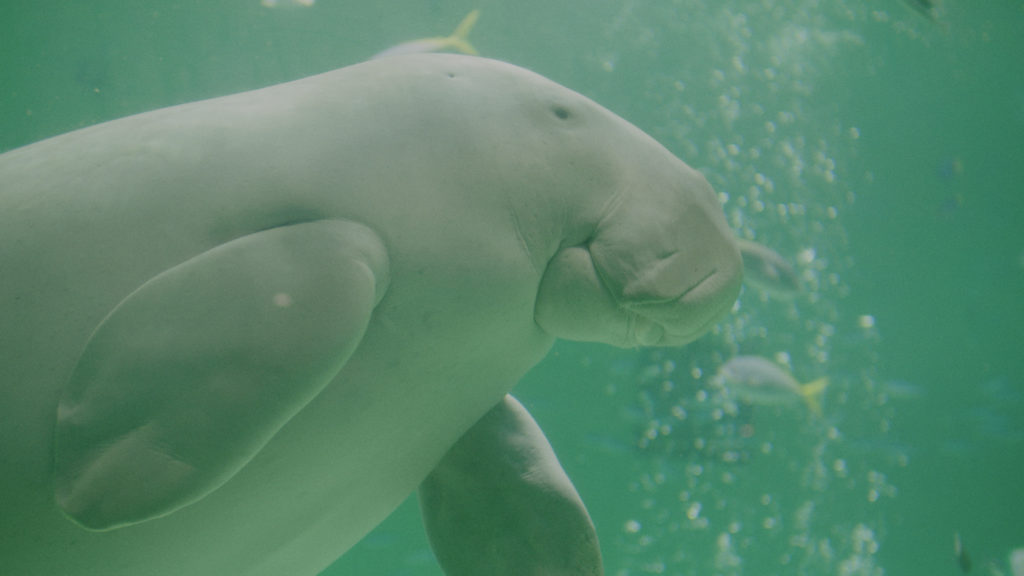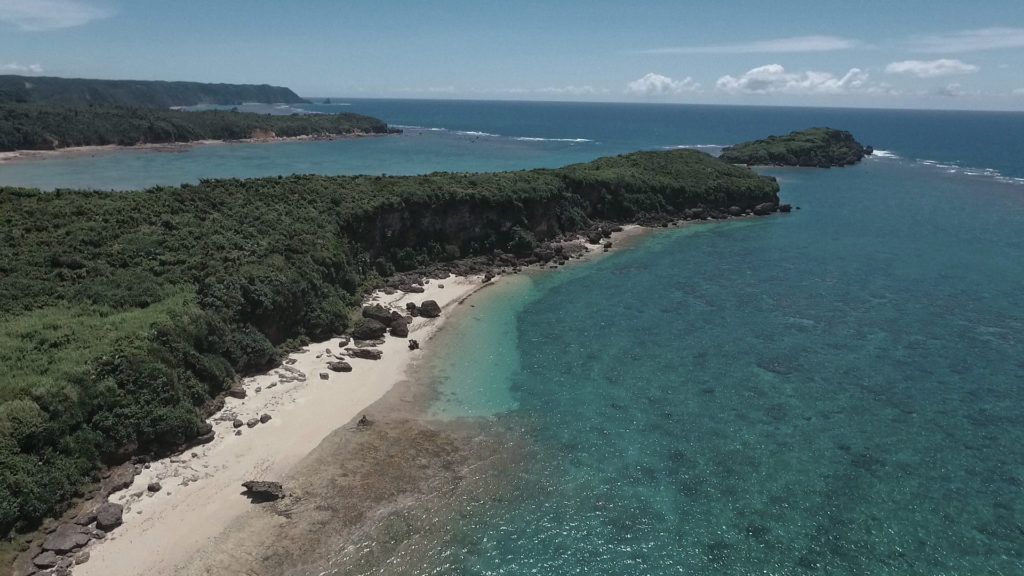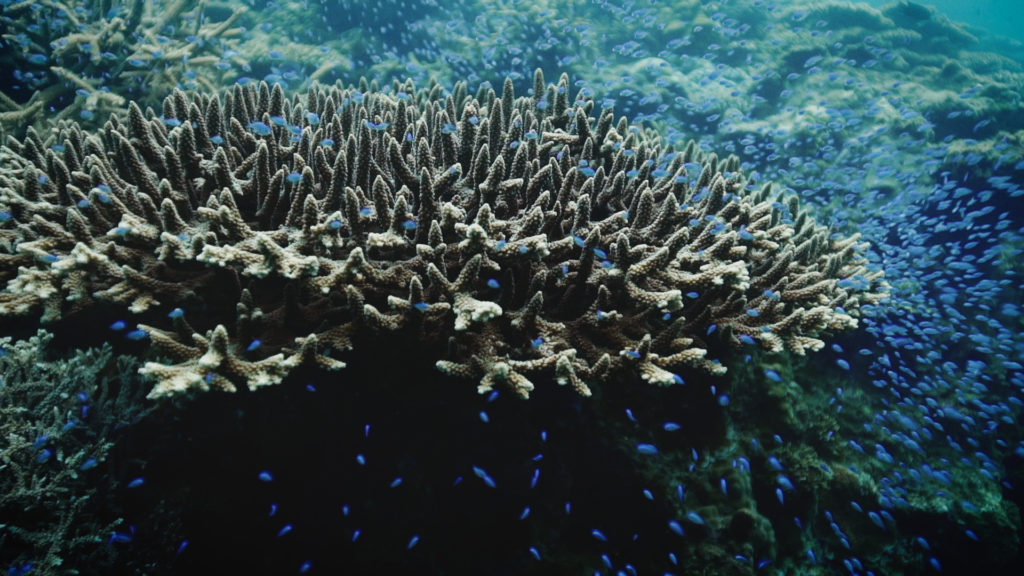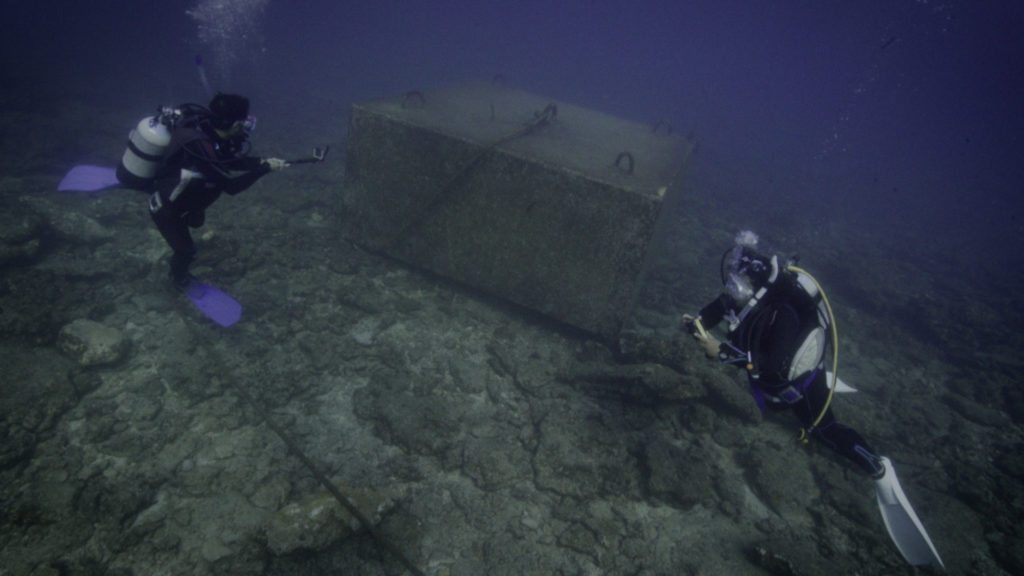A lone, life-size statue of a dugong overlooks sleepy Oura Bay in northern Okinawa, yet few know why it’s there. Even the locals from the surrounding Henoko District believed Japan’s dugongs, which once swam freely in the warm Okinawan waters, were a thing of the past—until earlier this March when a dugong and her calf were sighted.

Oura Bay is home not only to the critically endangered Okinawa dugong, but also to sea turtles, 400 kinds of coral including blue coral, crab, shrimp, tropical fish and sea grass ecosystems. But while Okinawa receives nearly eight million visitors annually, most flock to the more popular beach resorts around Naha and Motobu, while port towns like Henoko are forgotten.
ENDANGERED ZAN
It’s hard to imagine a more peaceful creature than the slow-moving herbivorous zan, the Okinawan name for dugong. During the Ryukyu Kingdom Period, they were revered, even worshiped, appearing in Japanese folklore as creatures who could control the weather. Some believed the dugongs were ningyo, Japanese mermaid goddesses. Hunting, much less eating these creatures would bring misfortune. However, after World War II, post-war malnutrition led people to hunt dugongs for food, drastically decreasing the zan population.
Dugongs are extremely sensitive and require a stable environment, fleeing from any trace of water, noise and light pollution. Everyday, they follow a trail through the sea grass to the bay, their feeding ground. Without the bay and the sea grass ecosystem, they would starve. Unlike the manatee, dugongs are restricted to the ocean due to a suction cup-like mouth making them dependent on sea grass and less adaptable to feed on other types of marine vegetation. Additionally, their leisurely drift makes them easy prey for other ocean predators. Although they can live up to 70 years, they breed slowly, giving birth to a single calf only a handful of times in a lifetime.
Only three dugongs (a male, female and young male) had been identified within the past decade, but the recent sighting of the mother and child gives hope there may be more.

HENOKO IN THE CROSSHAIRS
Similar to Hawaii, Okinawa relies heavily on tourism and the military. Following a post-World War II treaty in 1960, Okinawa hosts 75% of U.S. military bases located in Japan and about half the troops, although Okinawa accounts for just 0.6% of Japanese territory.
In recent years, Henoko has periodically appeared in the media for local protests against the expansion of a U.S. marine base in Oura Bay. Oura Bay’s deep channels, ocean currents and varied sea level heights result in a diversity of wildlife found nowhere else. Unfortunately this natural bay is also an ideal location to harbor massive air craft carriers. The V-shaped air strip to be built into the bay will not go over the blue coral, but a drastic change in the shoreline would destroy the current environment as tides would shift and existing marine life either flee or starve. While the expansion was proposed in 1996, construction only began in June 2017 after two decades of being delayed by lawsuits and protests.

As it is, the dugongs have already exited the scene especially during an environment assessment when the government set up sensors to scan dugong activity, scaring the creatures away in the process. Construction plans continued after nothing showed up, but according to the Nature Conservation Society of Japan (NACS-J), prior research from 2015 showed fresh feeding trails and dugong excretion in the region. There are still traces of the dugongs’ presence in nearby waters outside the construction zone, but this location remains undisclosed due to concerns of scaring the dugongs away again.
Today, Oura Bay is dotted with orange oats held down by concrete blocks to demark the expansion area. There are local demonstrators waving rainbow peace flags both on land and in canoes. The issue is a sensitive matter, mainly divided between protestors and those who feel like they have no other choice.


“ZAN” THE MOVIE
Four years ago, Irishman Rick Grehan launched Tokyo-based ImageMill, a production company dedicated to serving ethical, sustainable brands. As a supporter of “1% For the Planet,” ImageMill gives back 1% of their earnings to NACS-J.
“I grew up in a peace activist family in a politically unstable Belfast,” Grehan says. “Even as a kid, I was carrying little placards and protesting.” When Grehan heard about the Oura Bay protests through NACS-J, he saw similarities between the two towns, both isolated from the mainstream eye and subdued under the central government’s plans. Grehan immediately felt a connection and flew down to Okinawa to film “ZAN,” an investigative documentary on the dugongs in Henoko, which is where he met Yu Kisami.
Born and raised in Tokyo, Kisami was visiting his father who had retired and moved to join the Henoko protests. After hopping on the same diving boat as Grehan, Kisami joined the “ZAN” project and is the protagonist of the film. “ZAN” follows Kisami’s arduous journey to find the Okinawa dugong. Along the way, he meets local villagers and researchers who are deeply rooted to the land and ocean but have little say in their district’s future.
Although finding an immediate solution is difficult, ImageMill hopes that this film will shed light on Henoko and raise awareness both locally and internationally. The film has taken two years to produce.
“We’d like to move the emphasis away from reliance on military,” Grehan explains. “Not only is this expansion causing Japan a lot of money, but it raises concerns on security measures as Henoko may become a target. Instead, there should be greater support on taking advantage of the biodiversity and developing ecotourism in this location, even renewable energy infrastructure, and programs that teach the local people skills.”
ImageMill is currently working with local groups to organize tours and programs introducing local and international visitors to Henoko’s wildlife. Originally set to premier this winter, “ZAN” was hurriedly released this summer after news of the construction broke. The documentary has garnered the support of brands including Patagonia and Nauticam and will be shown at Yujiku Asagaya Theater in Tokyo at 8:30 p.m. from Nov. 11-17. Hosting screenings can also be arranged.
TRAVEL TIPS
Explore Oura Bay’s white sandy beaches, clear waters and mangroves for yourself. There are regular flights from most domestic airports to Naha. Note there are currently very few English-speaking services available in the area.
Dugong no Sato operates diving, kayaking, glass boat, hiking and wildlife observation tours. Bookings can be made online or by phone (Japanese only).
Oumi Dive Shop hosts dives at Oura Bay (by reservation only).
Teruya Guest House is a three-minute walk to the shore and comes with free parking and a wood deck perfect for barbecues. The adjacent restaurant is a popular place to mingle with the locals. To book, call 090-9783-7477.




